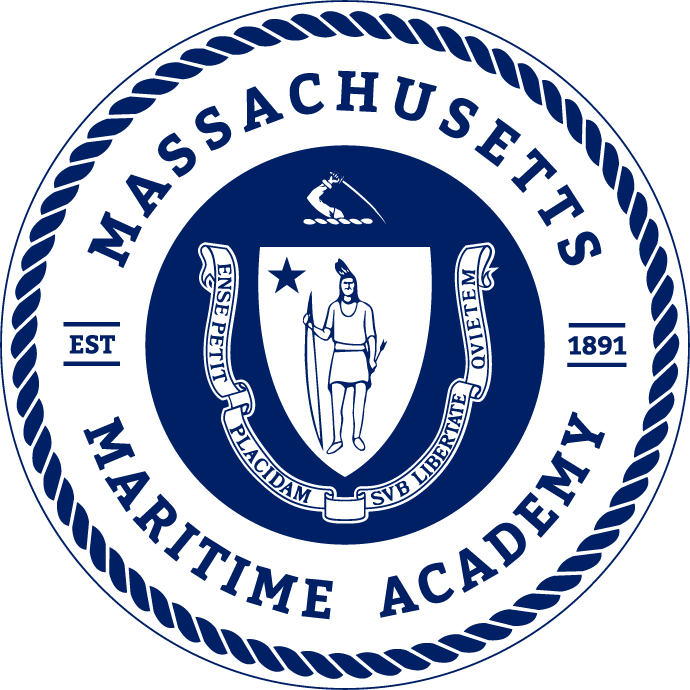Course Description
This course reinforces and continues the learning of the navigational processes previously acquired in Coastal Navigation that are used daily while at sea. In addition to applying the knowledge already studied including position fixing techniques, sources of error and correction calculation, NAVAIDS, and navigational publications, the student will learn the concepts of Tides and Currents and their calculation, The Navigational Sailings, and be introduced to voyage planning, use of navigation publications, and navigational record keeping. Classwork is supplemented by practical chart plot exercises in weekly labs including time in the Electronic and Navigation Lab (ENL) or Integrated Navigation Lab (INL) simulator with students working in teams of two at each student station. Note: A student who fails twice to receive a minimum C- grade will be disenrolled from the Marine Transportation degree program. [Lab time required]
This course consists of two 1-hour lectures and one 2-hour lab per week for a semester with practrical assessments and a comprehensive final examination.
Entrance Requirements
Successful completion of ST‑0999 Sea Term I and MT‑1221 Coastal Navigation
This course serves as a pre-requisite for MT‑2371 Sea Term II and MT‑2222 Celestial Navigation.
STCW Objectives
Demonstrate knowledge and understanding of the following STCW elements:
- OICNW-A1.03 Thorough knowledge of and ability to use nautical charts, and publications, such as sailing directions, tide tables, notices to mariners, radio navigational warnings and ships’ routeing information
- OICNW-A1.05 Ability to operate echo sounder equipment and apply the information correctly
- OICNW-A1.07 Ability to determine errors of the magnetic and gyro-compasses, using terrestrial means,
- OICNW-A1.07 Allow for errors in magnetic and gyro-compasses
Demonstrate proficiency in the following skills:
- OICNW-1-2D Plot the ship’s DR position
- OICNW-1-2E Determine course to steer
- OICNW-1-5D Determine course to steer by magnetic compass
- OICNW-1-5E Position fix by magnetic compass bearings
Topics
Lecture
- Course Intro
- Proper Units & Labels
- Current Sailings Introduction
- Current Sailings
- Navigation Chart & Pub Maintenance
- Navigation Mathematics
- The Sailings
- Plane Sailing
- Parallel Sailing
- Mid-Latitude Sailing
- Mercator Sailing
- Great Circle Sailing
- Composite Sailings
- Time Zones
- ETA’s
- Voyage Planning
- Tides Intro
- Tides Causes
- Tides Dynamic Theory
- Tide Calculations
- Tidal and Ocean Currents
- Current Calculation
- Combination and River Current Calculations
- Log Books & Records
Labs
- Coastal Navigation Review Plotting
- Chart Plot - Current Sailings
- Chart Plot - Current Sailings #2
- Chart Plot English Channel – Timed Plotting Exercise
- Chart and Publication Correction
- ENL Exercise – Block Island Sound
- Mid Term Chart Plot – Assessments First Attempt
- Universal Plotting Sheets and Plotting Charts
- ENL Exercise – Strait of Juan de Fuca Traffic Lanes
- Great Circle Sailing Chart Plot Part 1
- Great Circle Sailing Chart Plot – Part 2 - Gnomonic Chart
- Chart Plot - Final Exam Practice
- Chart Plot Final Examination – Assessments Second Attempt
Other objectives
- Present a proficiency in the skill of using visual bearings and radar ranges to fix their position and stay clear of dangers
- Display knowledge of the meaning and information proved by various NAVAIDs
- Show an understanding of how to determine and apply gyro compass error as well as magnetic Compass Error, Variation, and Deviation
- Demonstrate knowledge of available Navigational Publications and the information they provide
- Exhibit the ability to calculate the essential parameters of terrestrial navigation through The Sailings
- Prove an ability to determine tides and currents and know how these affect safe navigation, and
- Reveal an understanding of voyage planning including proper record keeping
- A confidence that they can keep their vessels out of danger when navigating in Coastal Waters by fixing their position through various techniques, planning passages, and making adjustments necessary to compensate for various sources of error
- Expand familiarity with and understanding of navigation terminology
- Further ability to use the tools of navigation, and
- An appreciate of how piloting skills are used in industry
